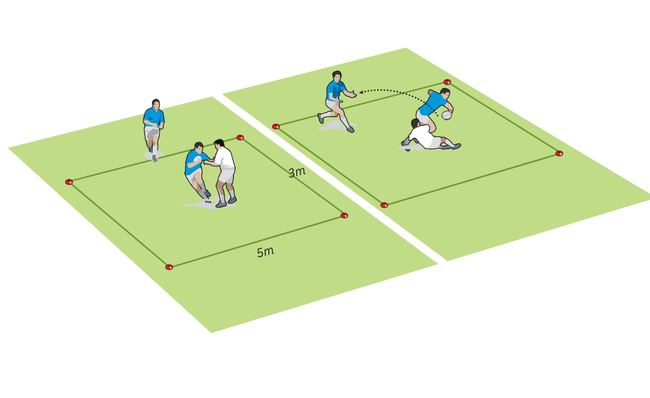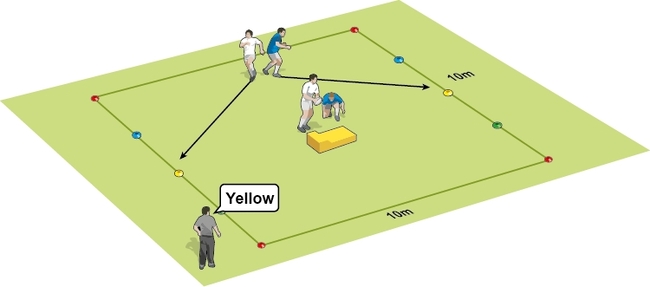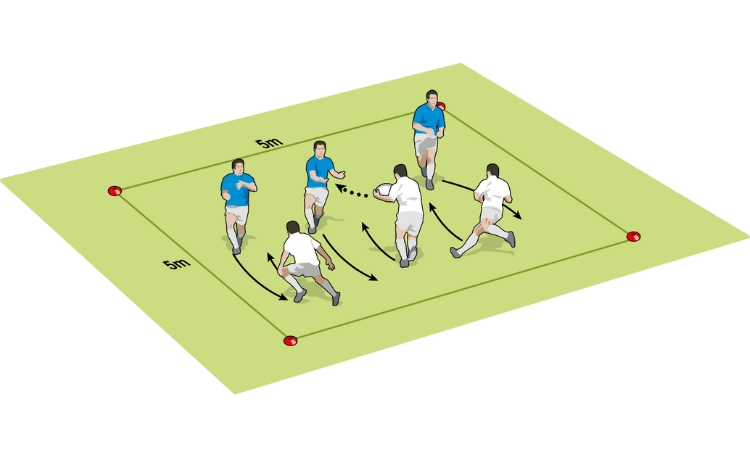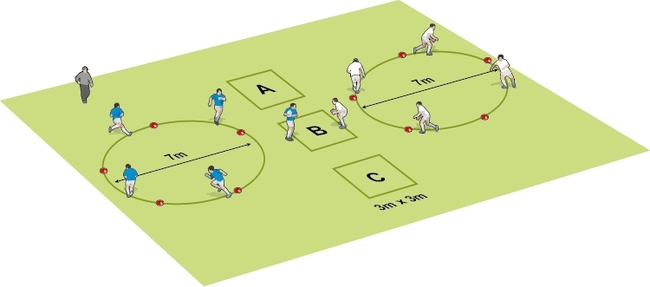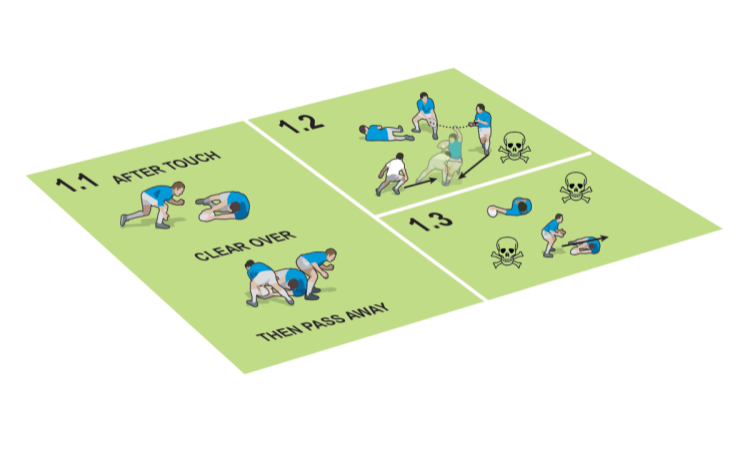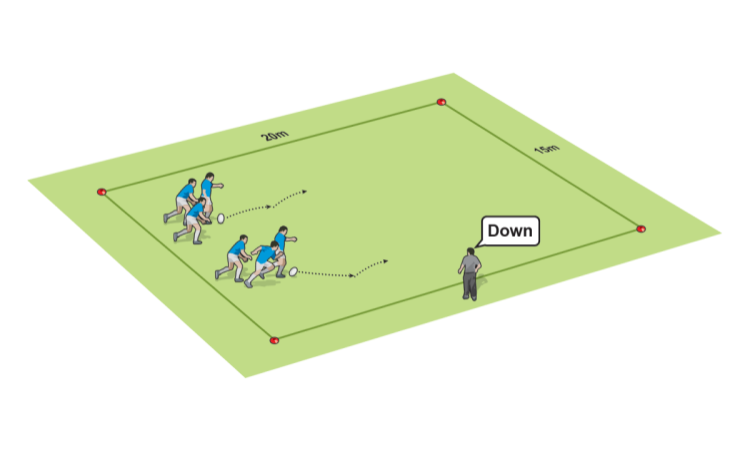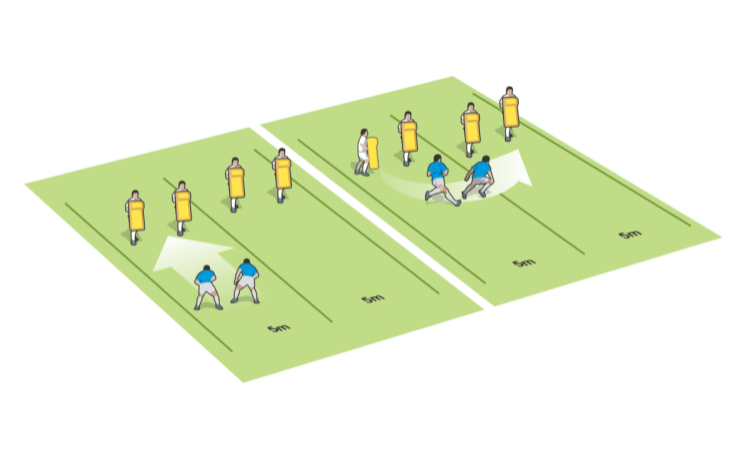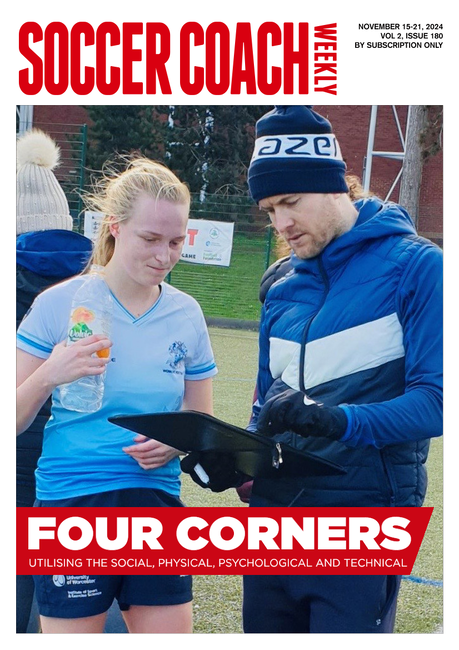Eight rules for rucking in rugby
1. Fight to ground
The ball carrier works hard into contact. A job done well here can make everything else easier. The ball carrier should show agility into contact and aim to drive past the tackler and not directly into his core area and fall at his feet.
2. Place away
The ball carrier should not place the ball until he is settled on the ground. This means under control. He should try to get his body turned back towards his own team, placing the ball as far from the opposition as he can. This reduces the size of the gate and makes it more difficult for the opposition to reach over to get the ball.
3. Drive and clear
As the ball carrier is being tackled, the support players should begin to drive him forwards and clear out all tacklers. They should aim to drive past the ball but stay on their feet.
4. Low body, head up
Body positions of all players in contact should be low and dynamic with the head up and eyes open.
5. Same shoulder, same foot
When driving into the opposition, the support players need to step close towards the target in front of them. The contact should be with the same shoulder as the foot that steps in. This will increase the effective transfer of power and weight into the contact area.
6. Punch from the arms
Ensure that the players’ arms “punch” forward dynamically, with the arms starting in and elbows tucked into the body. Once bound, the player should grip the opposition tightly.
7. Maintain momentum
Players should maintain the forward momentum throughout the ruck. They do this by keeping low and driving up.
8. Protect the ball
Once defenders have been cleared, the next supporting player should protect the ball. He stays on his feet with a low centre of gravity, straight back and feet much wider than a shoulder width apart. This will give your player a solid base.
This article is from www.greenstarmedia.net/&sKey=">Rugby Coach Weekly.
Newsletter Sign Up
Coaches Testimonials

Gerald Kearney, Downtown Las Vegas Soccer Club

Paul Butler, Florida, USA

Rick Shields, Springboro, USA

Tony Green, Pierrefonds Titans, Quebec, Canada
Subscribe Today
Be a more effective, more successful rugby coach
In a recent survey 89% of subscribers said Rugby Coach Weekly makes them more confident, 91% said Rugby Coach Weekly makes them a more effective coach and 93% said Rugby Coach Weekly makes them more inspired.
Get Weekly Inspiration
All the latest techniques and approaches
Rugby Coach Weekly offers proven and easy to use rugby drills, coaching sessions, practice plans, small-sided games, warm-ups, training tips and advice.
We've been at the cutting edge of rugby coaching since we launched in 2005, creating resources for the grassroots youth coach, following best practice from around the world and insights from the professional game.




